Number of bitcoins on profit at highest level in two years

30 November 2023
The settlement between Binance and the US judiciary briefly triggered a media storm in the crypto world. After that, things quieted down. So we dive into a recent report by Glassnode on the bitcoin and ether market.
This Weekly in brief
- Market: It has been a year since the bear market saw its deepest point. From $15,400 on 21 November 2022, the price has risen 145 per cent to $38,000 today.
- News: More than 80 per cent of all bitcoin has been in the plus since last week. Investors are determined and don't seem to want to realise those gains for now.
- Behind the scenes: In October, Amdax CEO Lucas Wensing and econometrician Tim Stolte gave a presentation on algorithmic investing during Bitcoin Amsterdam. Their presentation can be seen here.
Cryptomarket
On 21 November 2022, two employees of the European Central Bank (ECB) posted a triumphant opinion piece in the German newspaper Handelsblatt. The exchange rate had just fallen below $16,000 due to the demise of FTX. The ECB staff looked back to the summer of that year, when the price stabilised around $20,000.
“
[The stabilisation of the price around $20,000] fuelled hopes that it was a breather on the way to new highs. However, it was clear beforehand that it was a last gasp for air, on the road to irrelevance."
The Gastkommentar was posted as a blog on the ECB website a few days later. From there it went around the world, landing under the following headline in the Financieele Dagblad: "ECB research suggests bitcoin is heading for irrelevance".
The ECB staff piece appeared to mark the deepest point of the bear market to the day. How to get it done. On 21 November 2022, the price of bitcoin was quoted at $15,400. It was the end of the previous market cycle and the beginning of the current one.
From the bottom, the price rose 145% in a year to today's $38,000. Most of the metrics that say something about adoption, usage and activity are also surging again. According to research by crypto.com, the number of people holding crypto rose 21% from 425 million to 516 million in the first half of this year. In a bear market.
Let's look a little wider than bitcoin. After all, there are dozens of other projects that have built their own existence and network effect. Together, they form an independent global infrastructure on which we capture, store and transfer digital assets. All major players in the financial sector have assembled teams that are building the financial infrastructure, products and services of the future.
Never has crypto been more relevant than now. Not surprisingly, one by one, all major asset managers are going over. Countries are competing with each other to be the most attractive crypto hub. And fintechs are discovering that with stablecoins you can send dollars to the other side of the world in seconds. Not to mention the countless decentralised innovations around finance, cloud computing, AI, creative works and gaming.
That doesn't mean crypto will be mature tomorrow. For many applications, it will still take many years before they are ripe for use by the masses. But heading towards irrelevance? That was not a best prediction from the ECB.
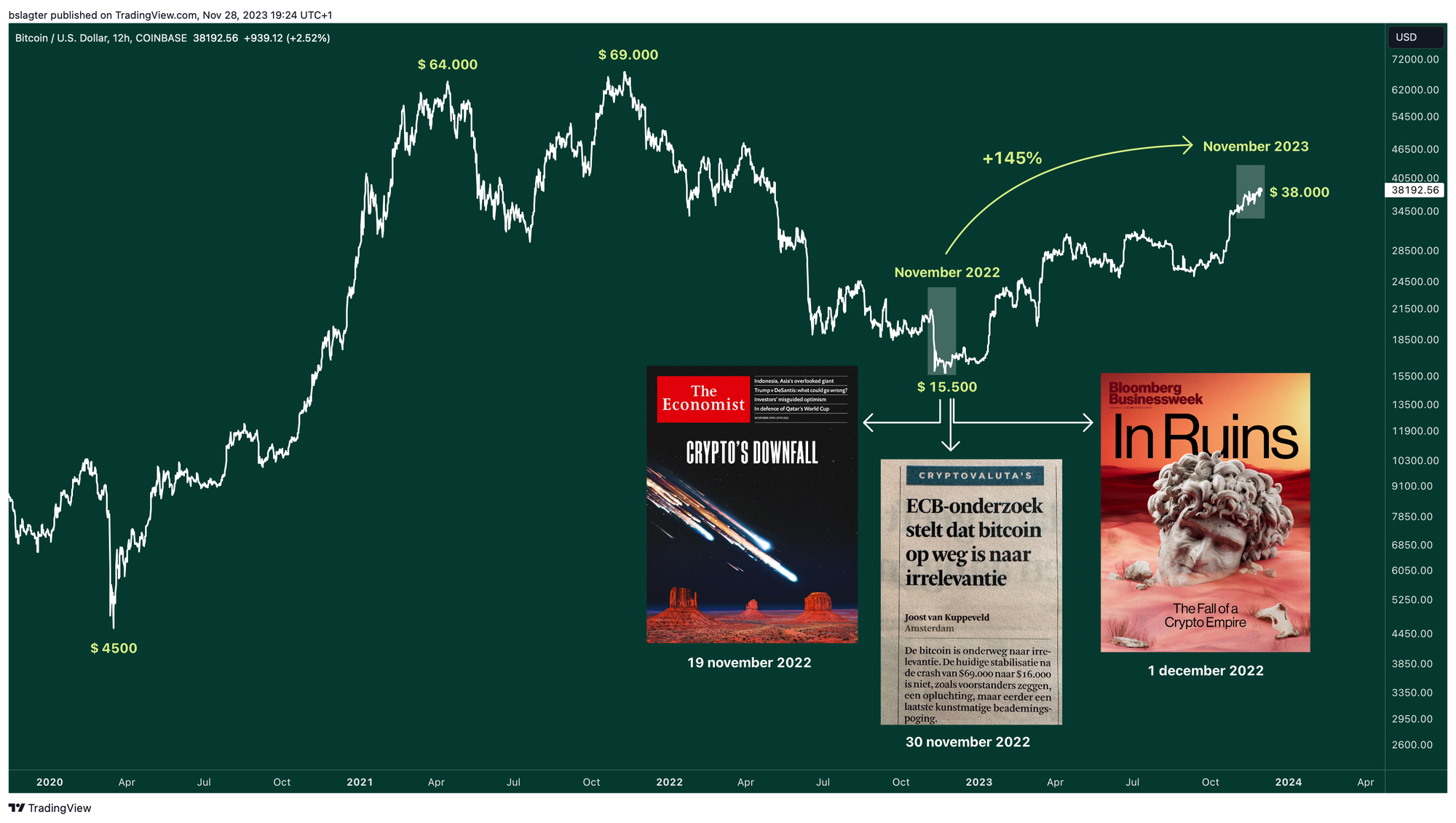
This is definitely not the first time we have witnessed this. Bitcoin has been declared dead every time in the depths of the bear market. There is even a website dedicated to it. It's part of the winter in the crypto market. Tip: Last week's Cryptocast talks extensively about the seasons of the crypto market.
But after every winter comes spring. Unless this emerging technology ceases to exist, of course, but it by no means looks like that. Therefore, the most likely scenario is that we are heading for another summer in the crypto market. If history repeats itself then we can expect it in 2024 and 2025. We are already looking forward to the headlines that go with that season: "Bitcoin is a bubble!"
And they are right too. The peak of the bull market is characterised by hype, euphoria and unrealistic expectations. The price is then considerably higher than the price appropriate for actual adoption: a bubble. That bubble deflates in the bear market that follows. The common thread? After every bull market, the bottom rises again!
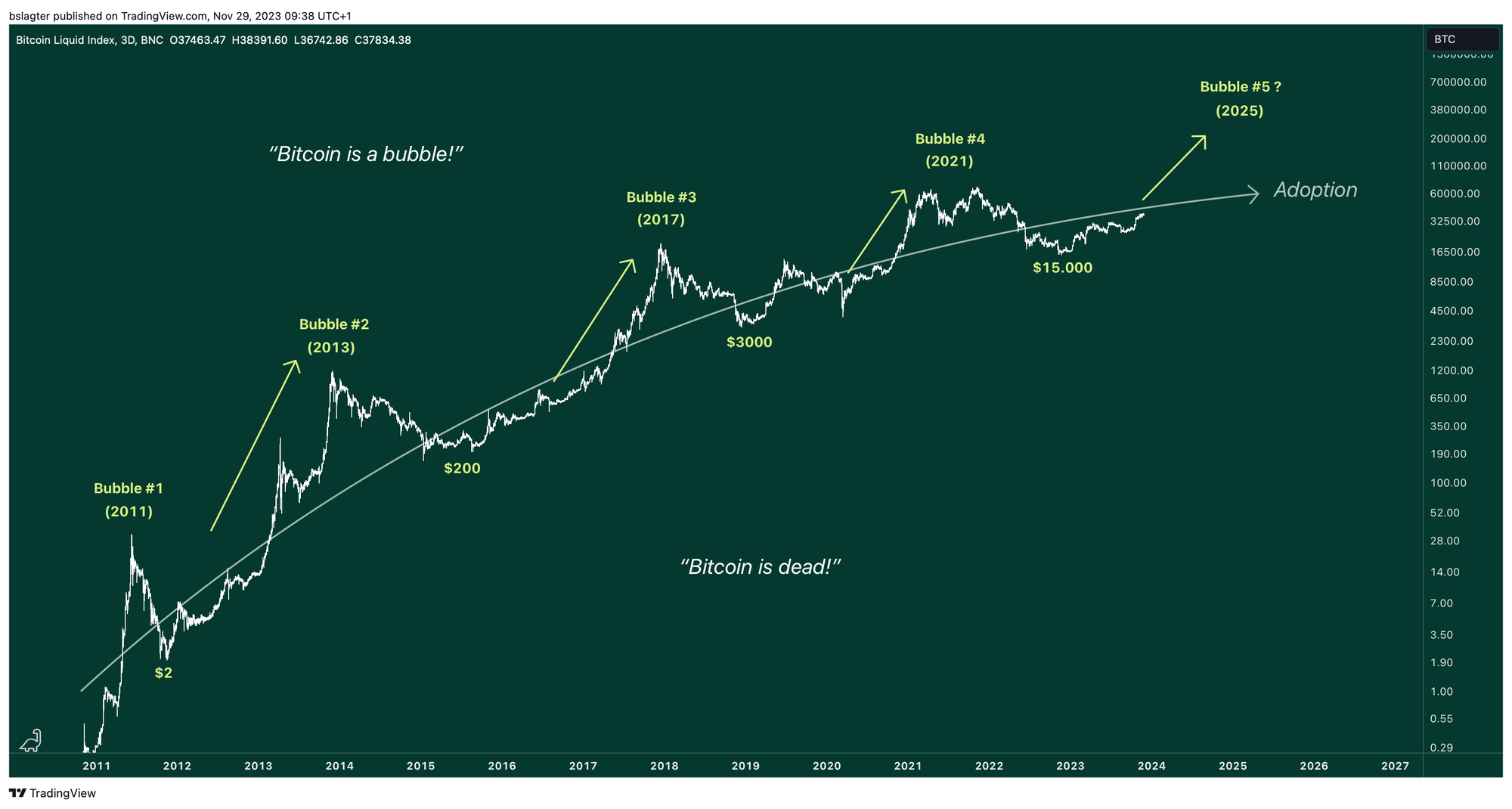
News summary
According to analysis company Glassnode, the number of bitcoins that are on profit reached the highest level in two years this week. More than 83 per cent of all bitcoins are in the plus. That compares with times when investors realised massive paper profits. This, it should be clear, is not the case now.
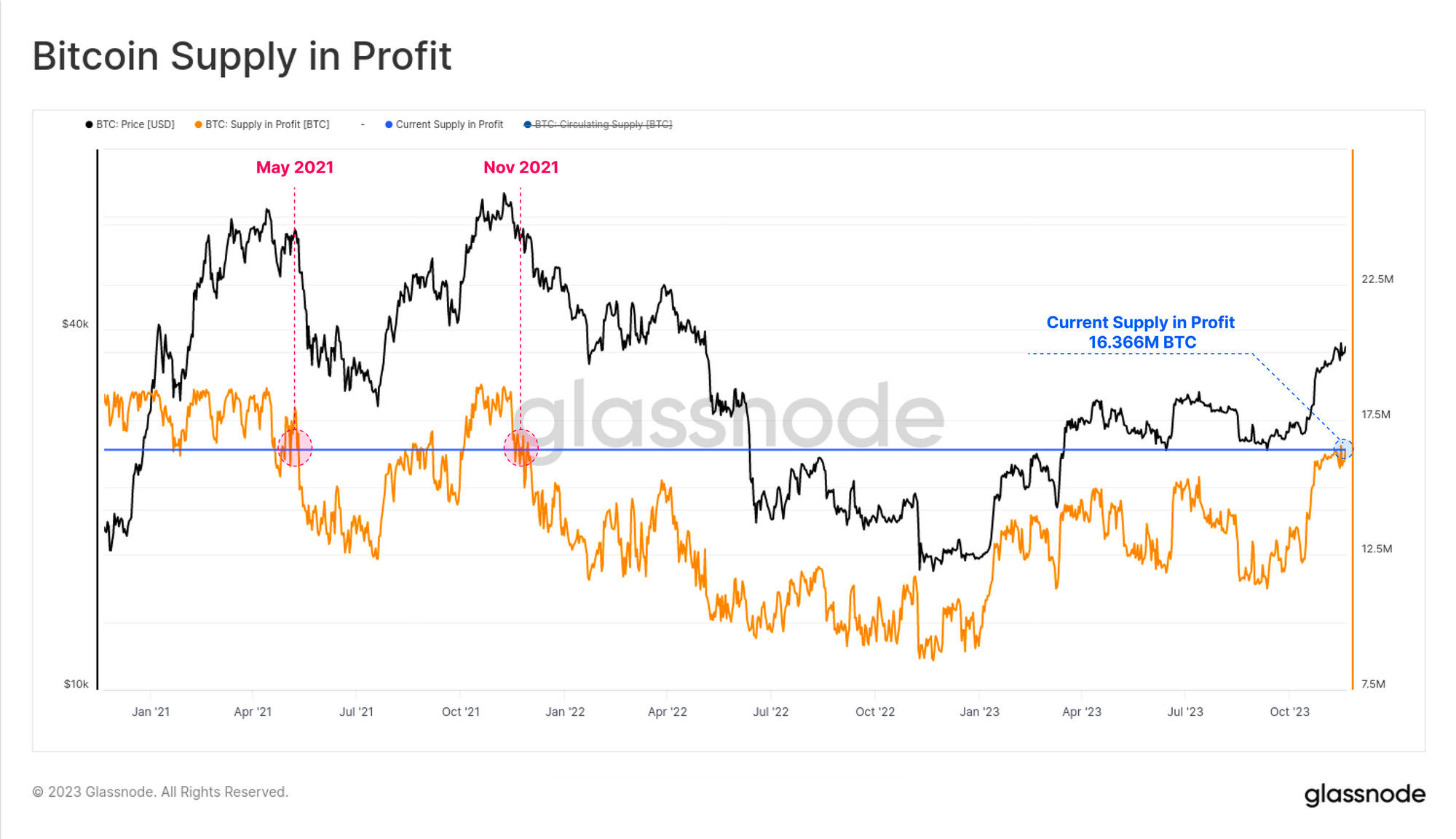
Instead, Glassnode analysts point to sustained accumulation, a period when both small and large investors are choosing to expand their positions. "This indicates growing confidence among investors, thanks in part to the optimistic expectations surrounding a possible spot bitcoin ETF," Glassnode writes.
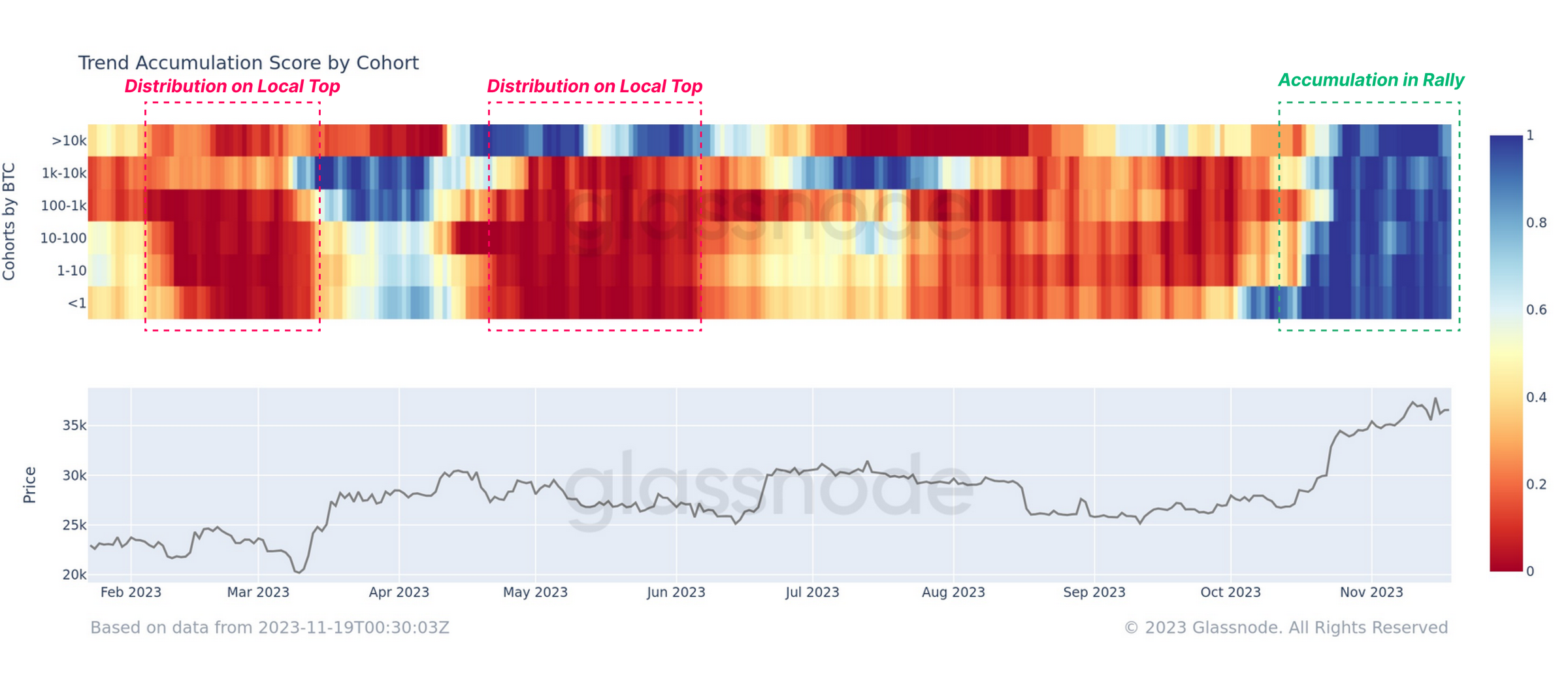
It is also striking that the contrast between the group of investors who hold their bitcoins for a long time and the group of investors with a shorter horizon is getting stronger. Since November 2022, the number of bitcoins held by the first group keeps reaching new record highs. The second group holds fewer and fewer. "This indicates an increasing determination by existing holders to hold on to their bitcoins, perhaps in anticipation of higher future gains."
On Ethereum, Glassnode's analysts note that the dynamics on the network have changed.
Since early October, the number of validators - participants who perform the consensus protocol and are rewarded for doing so - leaving the network has been slowly increasing. The number of ethers newly circulating is decreasing as a result; ether creation is linked to the number of validators active.
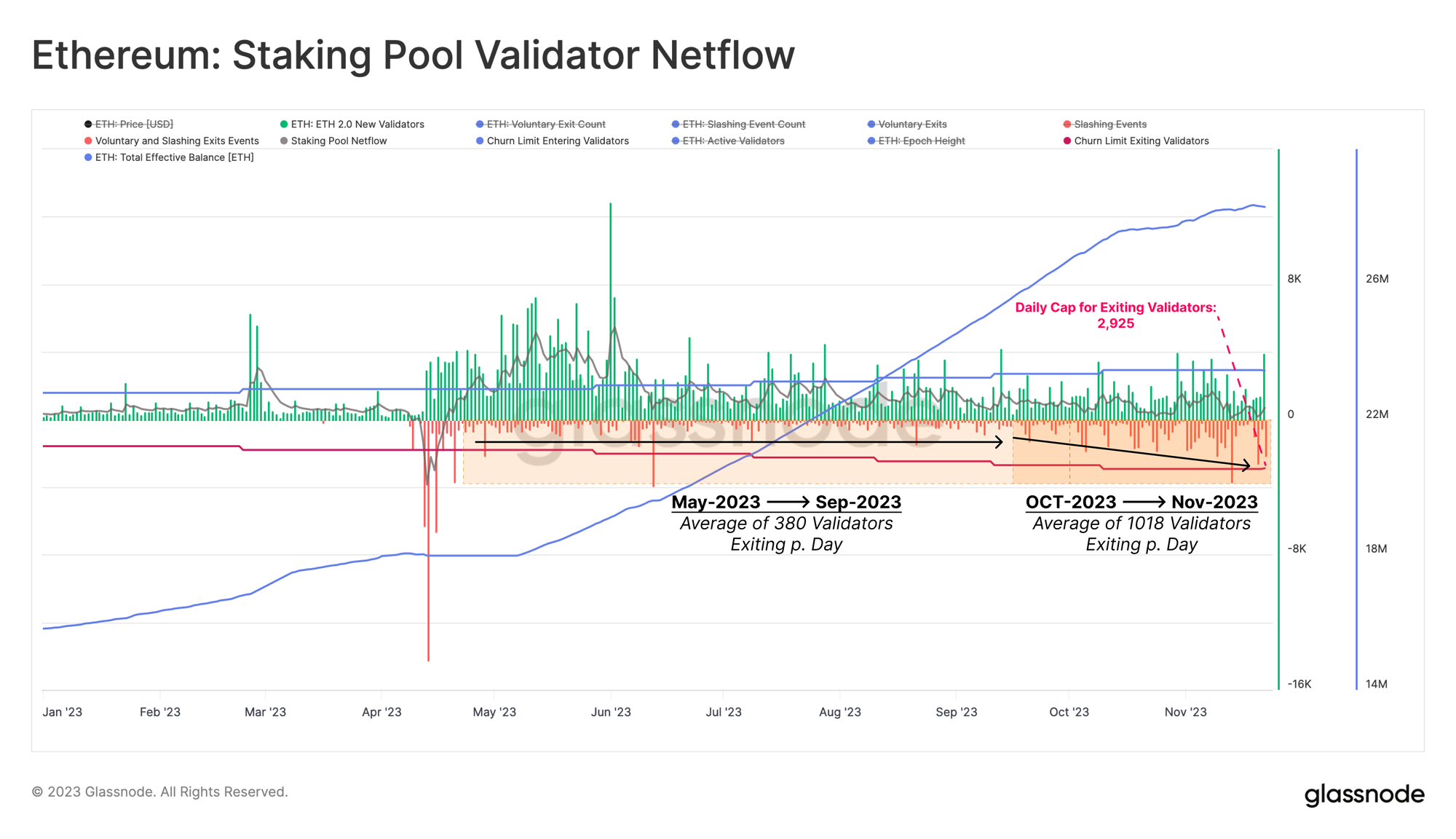
At the same time, activity on the Ethereum network has changed character. Glassnode writes that the number of transactions related to NFTs and Decentralised Finance applications decreased. On the other hand, activity around tokens and stablecoins increased over the same period to the extent that there was a net increase in demand for transaction processing. Some of the ethers required for this purpose, the transaction fees paid, are protocol-driven out of circulation.
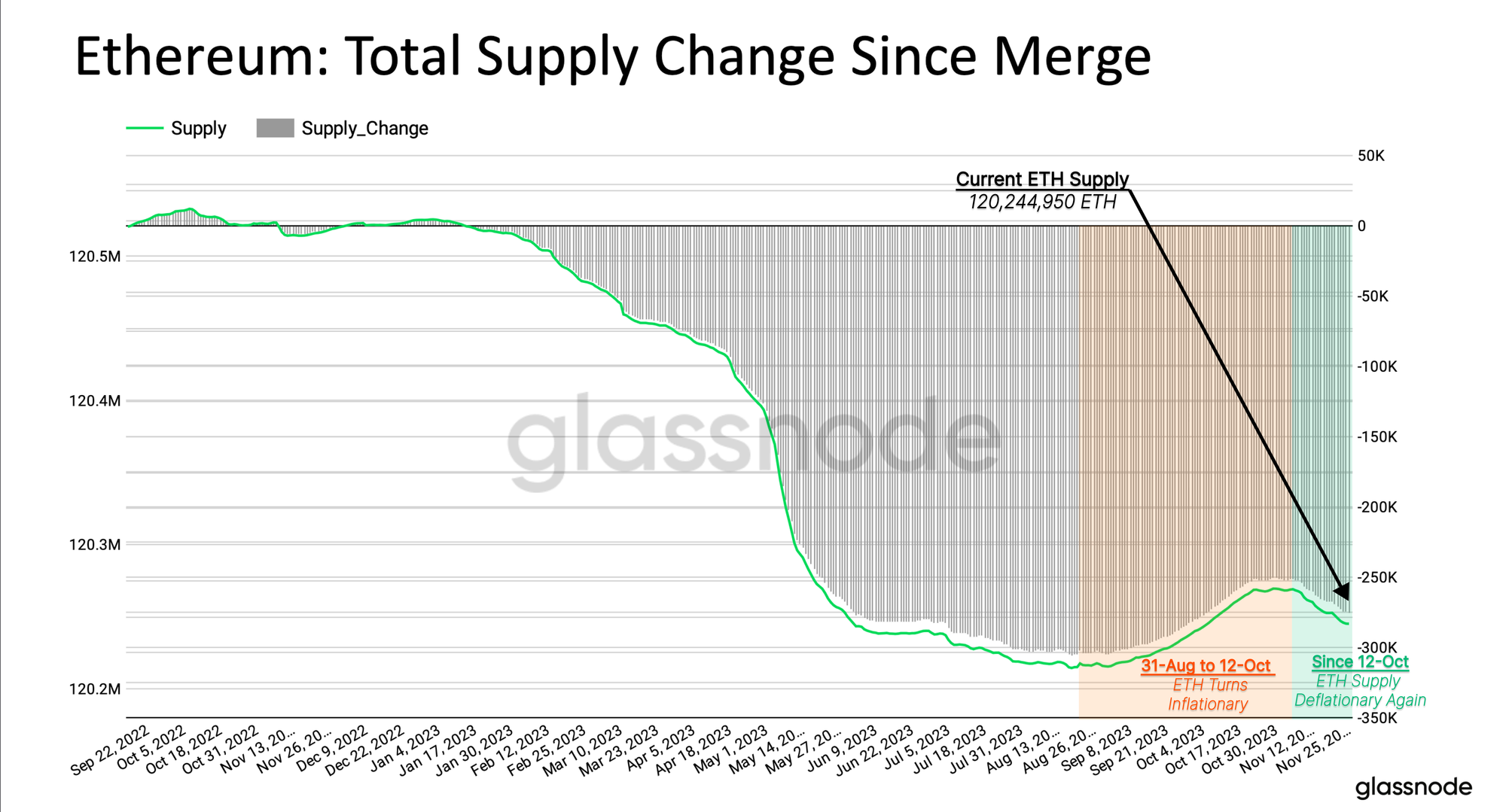
Other news:
- Stablecoin USDC is coming to Japan via banking group SBI. Circle writes this in a press release. The companies will work together to bring USDC into circulation and encourage its use. Earlier this year, Circle ceo Jeremy Allaire said that 70 per cent of USDC adoption occurs outside the US. Competitor Tether also calls its stablecoin "a lifeline for people in emerging economies and developing countries". SBI is still waiting for proper paperwork from the Japanese regulator.
- Bittrex Global is closing its doors and advising customers to leave. The crypto exchange has announced it is winding down its operations, just months after its US branch closed. Trading on the platform will stop on 4 December, after which customers will only be able to make withdrawals. The reason for this decision has not been disclosed. This closure follows Bittrex.US's bankruptcy filing in May, after both Bittrex.US and Bittrex Global were sued by the SEC for allegedly illegally operating a stock exchange without proper approvals.
- Dutch customers no longer welcome at crypto platform Bitget. As of 1 December, the door will close. Bitget is relatively unknown in the Netherlands, and launched a campaign early this year to change that. Presumably, the company has been knocked back. In an explanation, Bitget reports that it will no longer accept users with a Dutch ID or an address in the Netherlands. It will also stop advertising in our country.
Deepen
In the first episode of Pioneers of Amdax podcast series Een Nieuwe Koers, Danny Oosterveer talks to Amdax CEO Lucas Wensing. They discuss his career as an entrepreneur, his first experiences with crypto assets and take a look at the future of digital assets.
Behind the scenes
Last October, Amdax ceo Lucas Wensing and Quantitative Portfolio Manager Tim Stolte gave the presentation Algorithmic Investing with Bitcoin at the Bitcoin Amsterdam conference.
In this deep dive, they took the audience through the development of algorithmic strategies that outperform bitcoin. How do you determine the ideal entry and exit points and what indicators can you use for this?
Are you curious to hear Lucas and Tim's story? You can watch the presentation here:

Our website uses cookies
We use cookies to personalize content and advertisements, to offer social media features and to analyze our website’s traffic. We’ll also share information about your usage with our partners for social media, advertising and analysis. These partners can combine this data with data you’ve already provided to them, or that they’ve collected based on your use of their services.